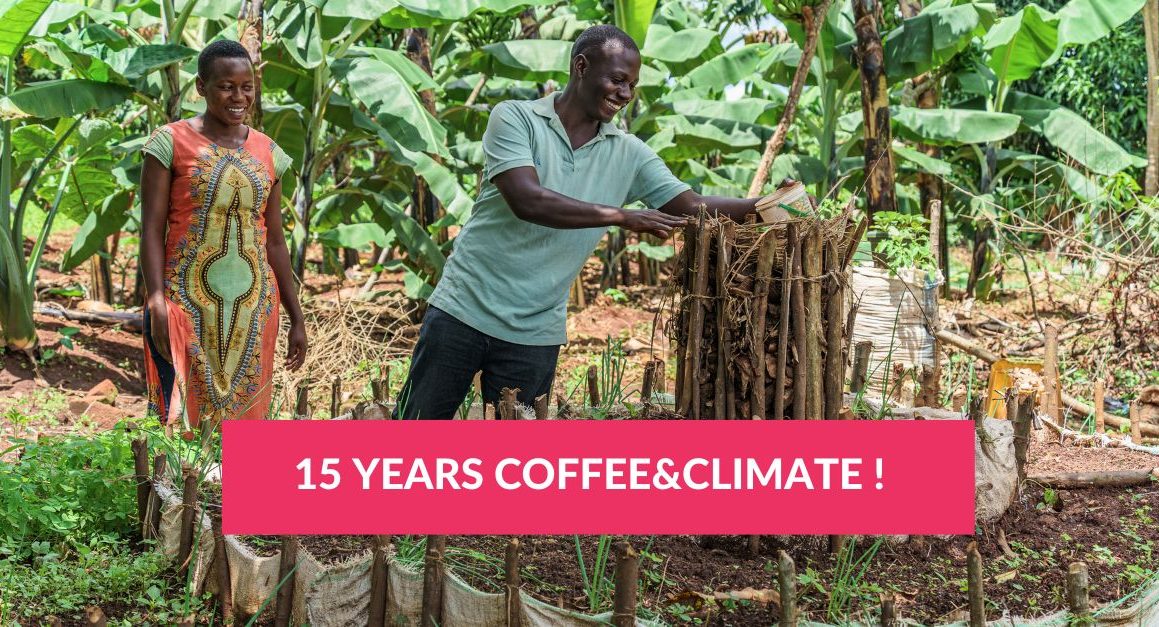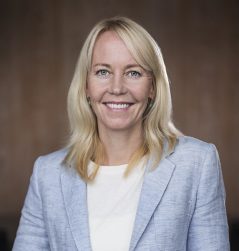15 Years of Action

Climate change threatens coffee production worldwide, and smallholder farmers are among the most vulnerable on the front lines. We spoke with Kathrine Löfberg, Chair of the initiative for coffee&climate, about 15 years of shaping the future of coffee in a changing climate.

We work hand in hand with farmers to develop solutions that fit their reality – what works here and now, in their specific context.
Looking back over the past 15 years, what inspired the creation of the initiative for coffee&climate (c&c) in the first place?
We saw the effects of climate change hitting coffee farmers hard, especially small-scale farmers, and realised it was both urgent and possible for us to contribute. The idea was simple: join forces, share knowledge, and take action together.
What are some of the biggest achievements or milestones that make you most proud as Chairperson of the initiative?
I’m proud that we’ve moved from talk to action – real tools in farmers’ hands, real change in the fields. And that we’ve built a strong community across countries, companies and cultures, with a shared, long-term commitment to create lasting impact.
How has the initiative evolved over time to meet the growing challenges of climate change in coffee-growing regions?
We’ve become more data-driven, more farmer-focused, and more flexible. Climate challenges are changing – and so are we. A key strength has been combining local knowledge and experience with international research to find practical, scalable solutions.
Can you share a personal story or moment during your time with c&c that deeply moved or inspired you?
Meeting a farmer in Tanzania who had used our support to start his own nursery bed really moved me. He proudly showed us how he was growing new, more resilient coffee seedlings – not just for his own farm, but to share with others. You could feel his pride and purpose as he spoke about helping his neighbours adapt and thrive. That kind of leadership at farm level – that’s hope in action.
Climate action can often feel overwhelming. How does c&c ensure that its work stays impactful and relevant on the ground?
By keeping it practical, local and human. We work hand in hand with farmers to develop solutions that fit their reality – what works here and now, in their specific context. And when something proves effective, we help scale it up and share it across regions, so that more farmers can benefit.
Innovation has been a driving force behind c&c’s work. How does the initiative foster innovative climate solutions for coffee farmers?
We test, we adapt, we listen. Innovation for us is about co-creating with farmers – not inventing in a lab far away. By capturing feedback and field experience, and feeding it into our c&c toolbox, we’re able to keep improving and sharing practical solutions that really work.
How has collaboration between private and public partners strengthened the work of the initiative? Any standout partnership?
Public-private collaboration has been key – bringing together knowledge, funding, and reach. Sida, the Swedish International Development Cooperation Agency, contributes valuable experiences and perspectives that enrich and deepen our approach, making the initiative stronger and more resilient.
What role do coffee farmers play in shaping the strategies and solutions implemented by c&c?
A big one. They’re not just recipients – they’re true co-creators. Their firsthand knowledge and daily experiences shape every step of our work. The best ideas often come from the ground up, and by listening closely and collaborating with farmers, we develop strategies and solutions that are practical, relevant and truly effective.
The c&c toolbox is a central resource. How has it developed over time, and how do farmers and partners benefit from using it in the field?
It’s grown from a collection of tools to a living, evolving platform. It combines local and international research and experiences, allowing farmers to learn, test and adapt solutions that fit their unique context. For example, a farmer in Honduras might adopt a climate-resilient planting method shared by a farmer in Tanzania, adapted to local conditions. The toolbox also enables this cross-border exchange of knowledge. Partners use it to align their efforts and amplify impact on the ground.
How do you see the next 15 years of c&c? What will be the key focus areas moving forward?
We’ll keep scaling what works, encouraging more users to adopt and contribute, while continuously adding new solutions to tackle emerging challenges. Above all, we’ll keep putting farmers and climate at the heart of everything we do.
If you could send one message to the global coffee industry today, what would it be?
No farmer, no coffee. Let’s act like we believe that – and let’s do it together. Real change will only happen when we unite across the value chain and work side by side with the farmers.
And finally, on a more personal note: what does coffee mean to you – beyond the cup?
To me, coffee is so much more than just a drink. It’s a bridge that connects people – from the farmers nurturing the beans to the friends and strangers who share a cup and a moment together. It’s about stories, culture, and those little pauses in life where we come together. And yes, of course, it tastes amazing too.